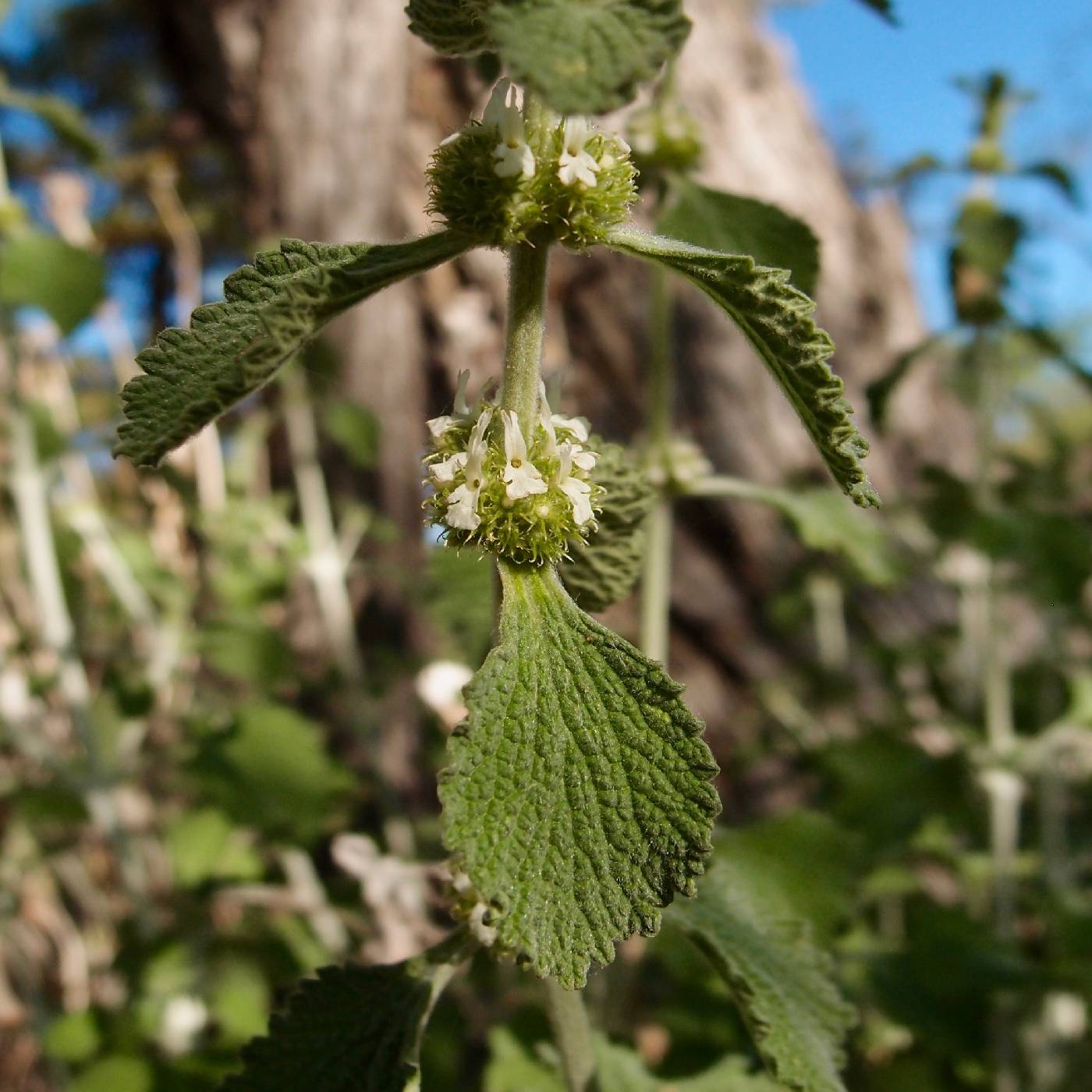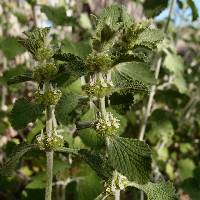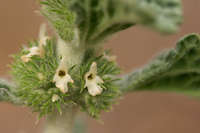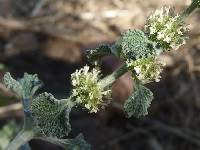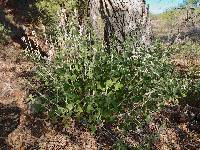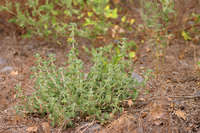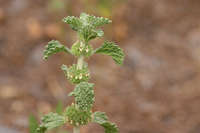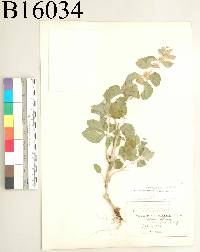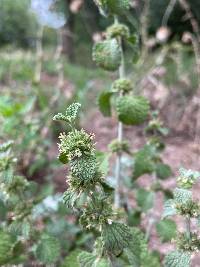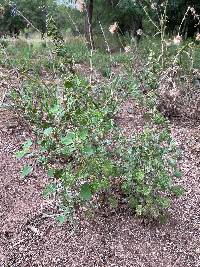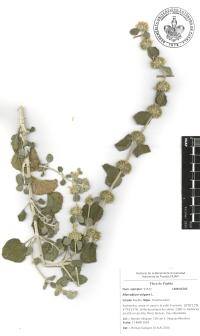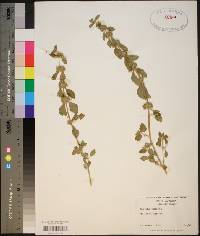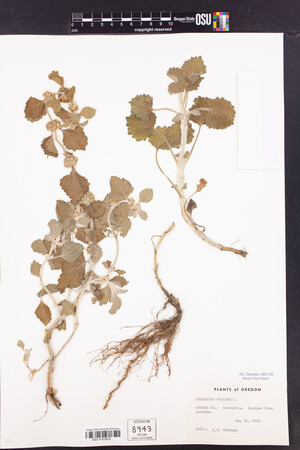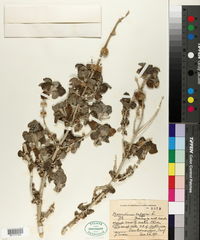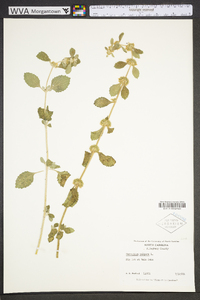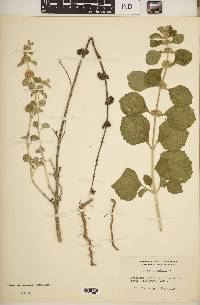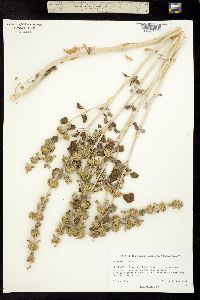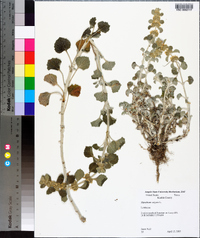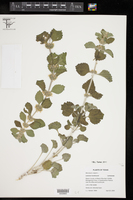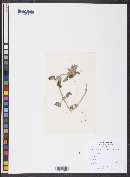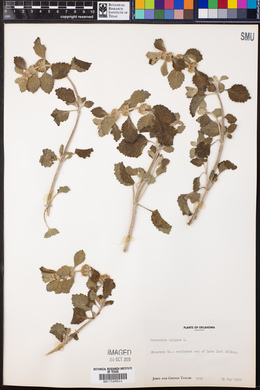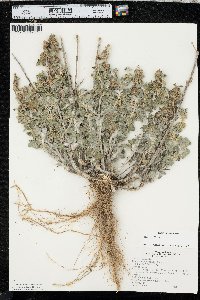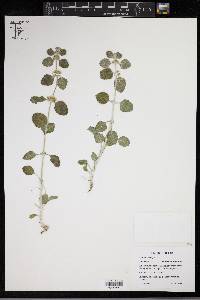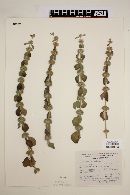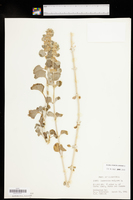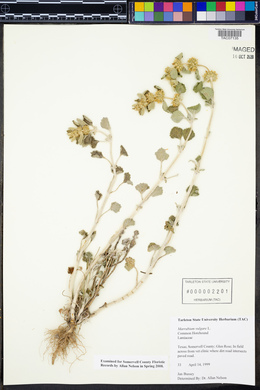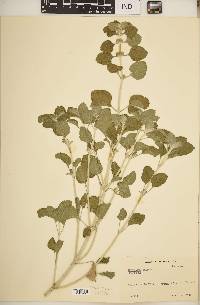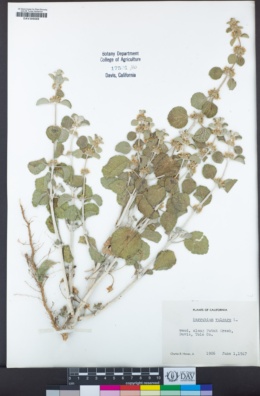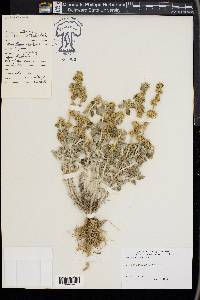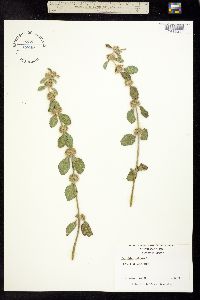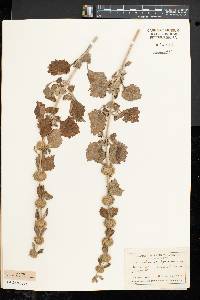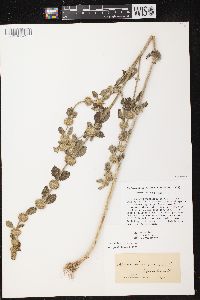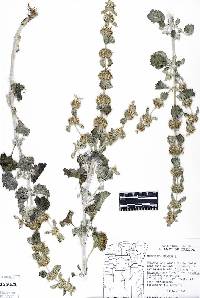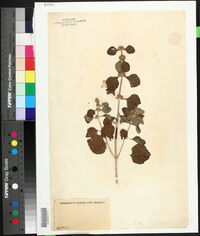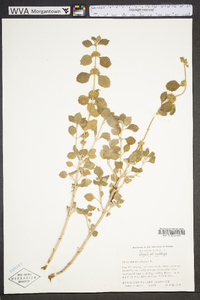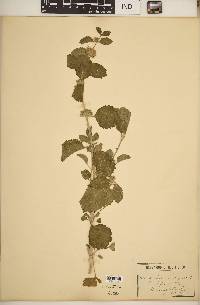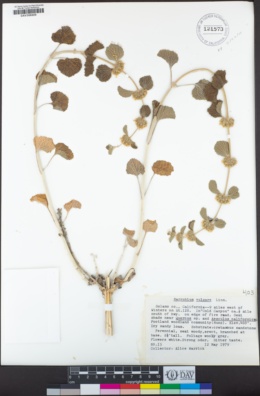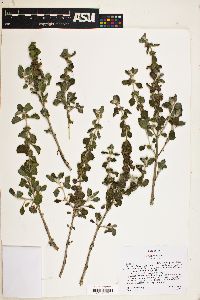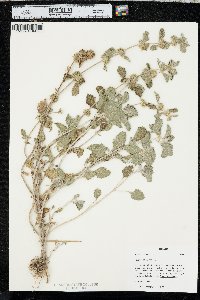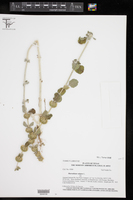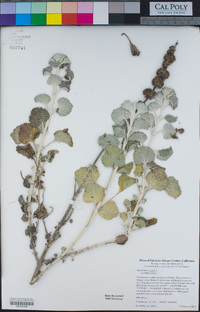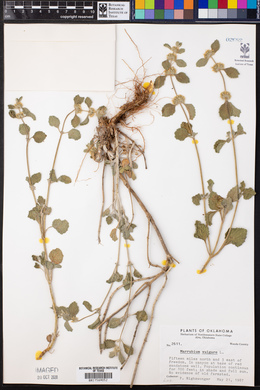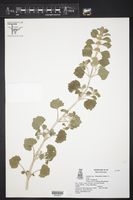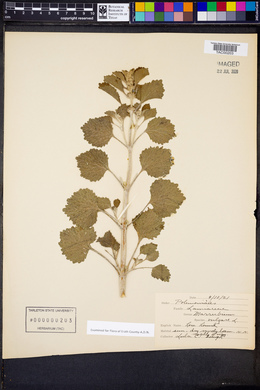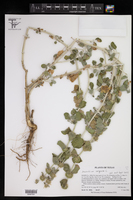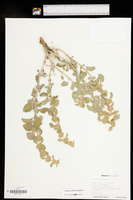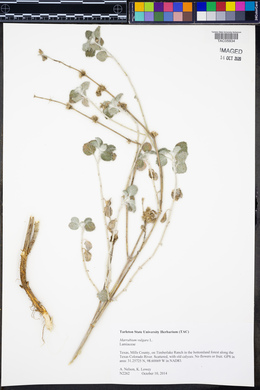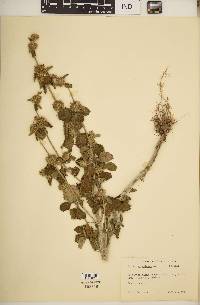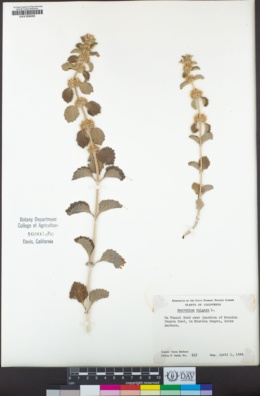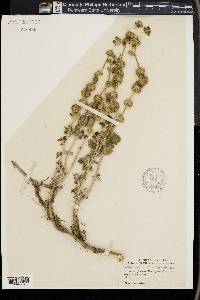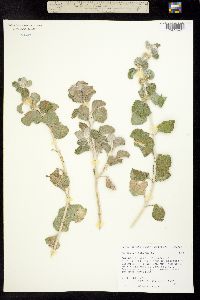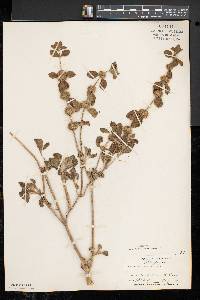Marrubium vulgare
|
|
|
|
Family: Lamiaceae
White Horehound, more...horehound (es: mastrán, marrubio, marrufo)
|
PLANT: Perennial herbs; trichomes glandular and stellate, often woolly; stems 10‑100 cm tall. LEAVES: petioles 0.5‑5 cm long; blades strongly rugose, broadly ovate to orbicular, 1.5‑5 cm long, 1.5‑5 cm wide, reduced distally; margins crenate to dentate; bases slightly cordate, truncate or broadly tapering. INFLORESCENCE: bracts petiolate, much exceeding the verticils. FLOWERS: calyx actinomorphic, 3‑6 mm long, with an internal fringe of hairs at the throat of the tube, the teeth usually 10, alternating large and smaller, the apices curled hooks; corolla white, 5‑10 mm long. NUTLETS: ca. 2 mm long, black to dark brown, bumpy. 2n = 34 (36). NOTES: Along roads and in riparian zones from Sonoran Desert to ponderosa pine communities: expected in all AZ cos.; documented in: Apache, Cochise, Coconino, Gila, Graham, La Paz, Maricopa, Mohave, Navajo, Pima, Pinal, Santa Cruz, Yavapai, Yuma cos.; 300‑2450 m (1000‑8100 ft); Mar‑Oct; extensively naturalized in the New World, including all states of the U.S. except FL, LA, ND and NH; Eur. Introduced for medicinal uses and as a flavoring for horehound candy. The combination of woolly pubescence, strongly rugose and often nearly circular leaf blades and curled sepal tips distinguishes this plant from other AZ mints. REFERENCES: Christy, Charlotte M. Lamiaceae. 2003. J. Ariz. - Nev. Acad. Sci. Volume 35(2). Wiggins 1964 Duration: Perennial Nativity: Non-Native Lifeform: Subshrub General: Perennial exotic herb from a taproot; stems several, prostrate to ascending-erect, 20-100 cm long/tall, densely white wooly. Leaves: Opposite, blades 1-6 cm long, conspicuously wrinkled, ovate to round, with crenate margins; generally green and pubescent above, white wooly below. Flowers: Whorled in globular clusters in leaf axils, with spiny calyces; corolla 5-10 mm long, whitish. Fruits: 4 nutlets Ecology: On disturbed ground from 2,000-7,500 ft (610-2285 m); flowers April-October. Distribution: Introduced to N. Amer., except Alberta, Manitoba, ND, LA and FL ; south to S. Amer.; throughout the world on every continent. Notes: Distinguished by pungent-smelling, noticeably wrinkly, thick soft leaves and white-wooly pubescence on the whitish stems and undersides of leaves; and the inflorescences in verticils surrounding stems in dense clusters. This introduced perennial can form dense stands at mid-elevations in disturbed areas. Ethnobotany: Herb is useful in tincture form to alleviate lung congestion. Species is sometimes substituted in brewing in place of hops. Navajo use it to treat indigestion, stomachache, influenza, colds, coughs, sore throats, and general aches and pains. It is also used in childbirth. Can be boiled to make a tea, sugar added, and hardened to make cough drops. Etymology: Possibly from the Hebrew for -bitter juice-. Vulgare is ancient word for common. Synonyms: None Editor: SBuckley 2010, FSCoburn 2015 Taprooted perennial, the stems generally several, 3-10 dm, nearly prostrate to suberect, conspicuously white-woolly; lvs wholly cauline, canescent-woolly or partly subglabrate, not much reduced upward, petiolate, the blade broadly elliptic to rotund-ovate, evidently crenate, 2-5.5 cm; cal stellate and often ±long-hairy, the tube 4-5 mm, the 10 narrow, firm teeth somewhat shorter, eventually widely spreading, their spinulose tips recurved from the first; cor whitish, slightly exserted, with subequal lips; 2n=34, 36. Native of Eurasia, escaped and established in disturbed habitats nearly throughout the U.S. and s. Can. June-Aug. Gleason, Henry A. & Cronquist, Arthur J. 1991. Manual of vascular plants of northeastern United States and adjacent Canada. lxxv + 910 pp. ©The New York Botanical Garden. All rights reserved. Used by permission. From Flora of Indiana (1940) by Charles C. Deam This plant has been cultivated for its medicinal properties since pioneer times. It has escaped from gardens to barnyards, roadsides, open woods, and woods pastures. I have found it to be common in hogyards where the hogs had killed all other vegetation without disturbing this plant. .…… Indiana Coefficient of Conservatism: C = null, non-native Wetland Indicator Status: FAC |
|
|
|

